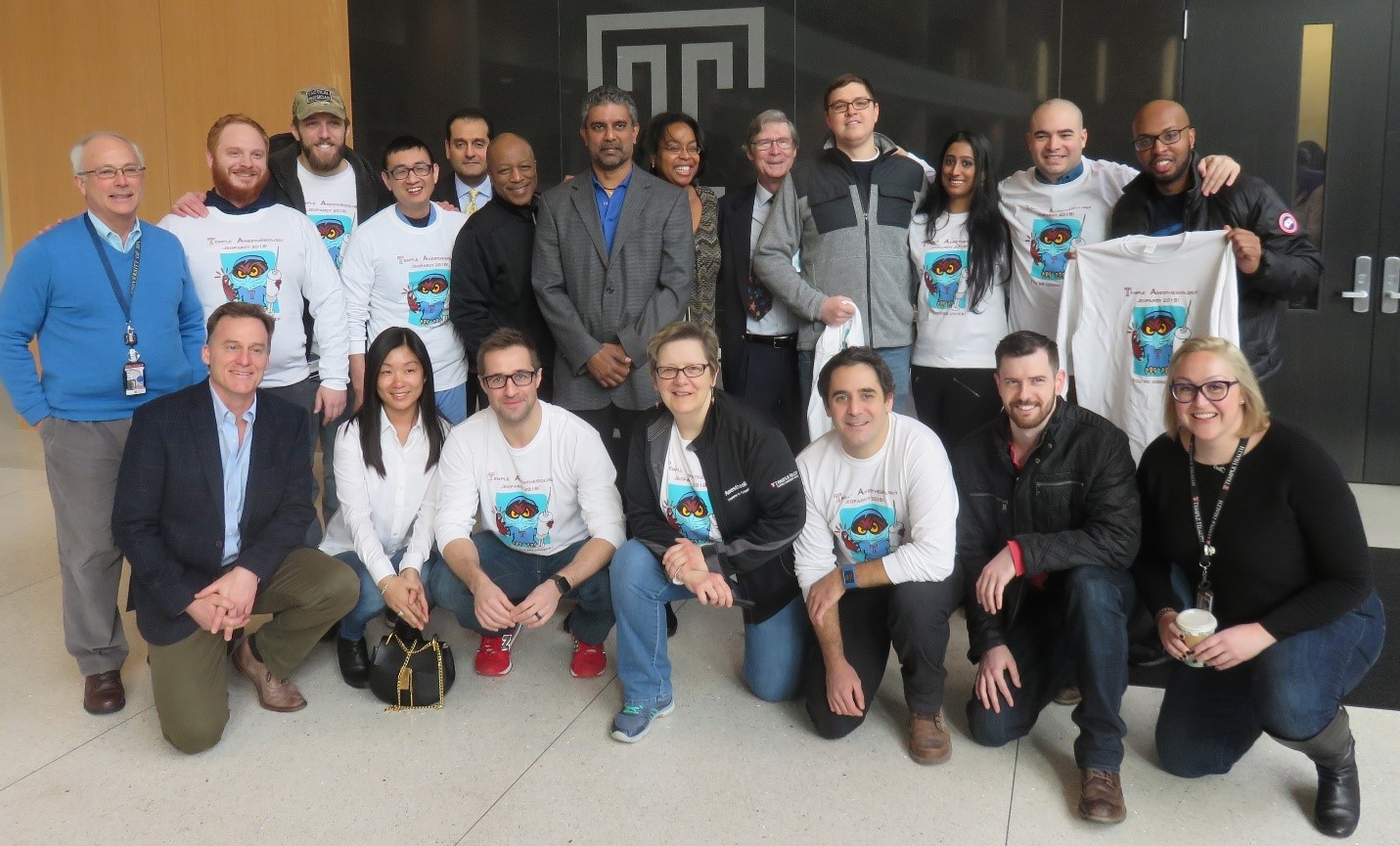Curriculum
Grand Rounds
Grand Rounds are held on Wednesday mornings from 7-8AM and are attended by medical students, residents, CRNAs and faculty. Topics range from innovate changes in the field of Anesthesiology, to the basics of research and professionalism. Active participation by all is encouraged. In addition to outside speakers, residents as well as faculty members provide lectures.
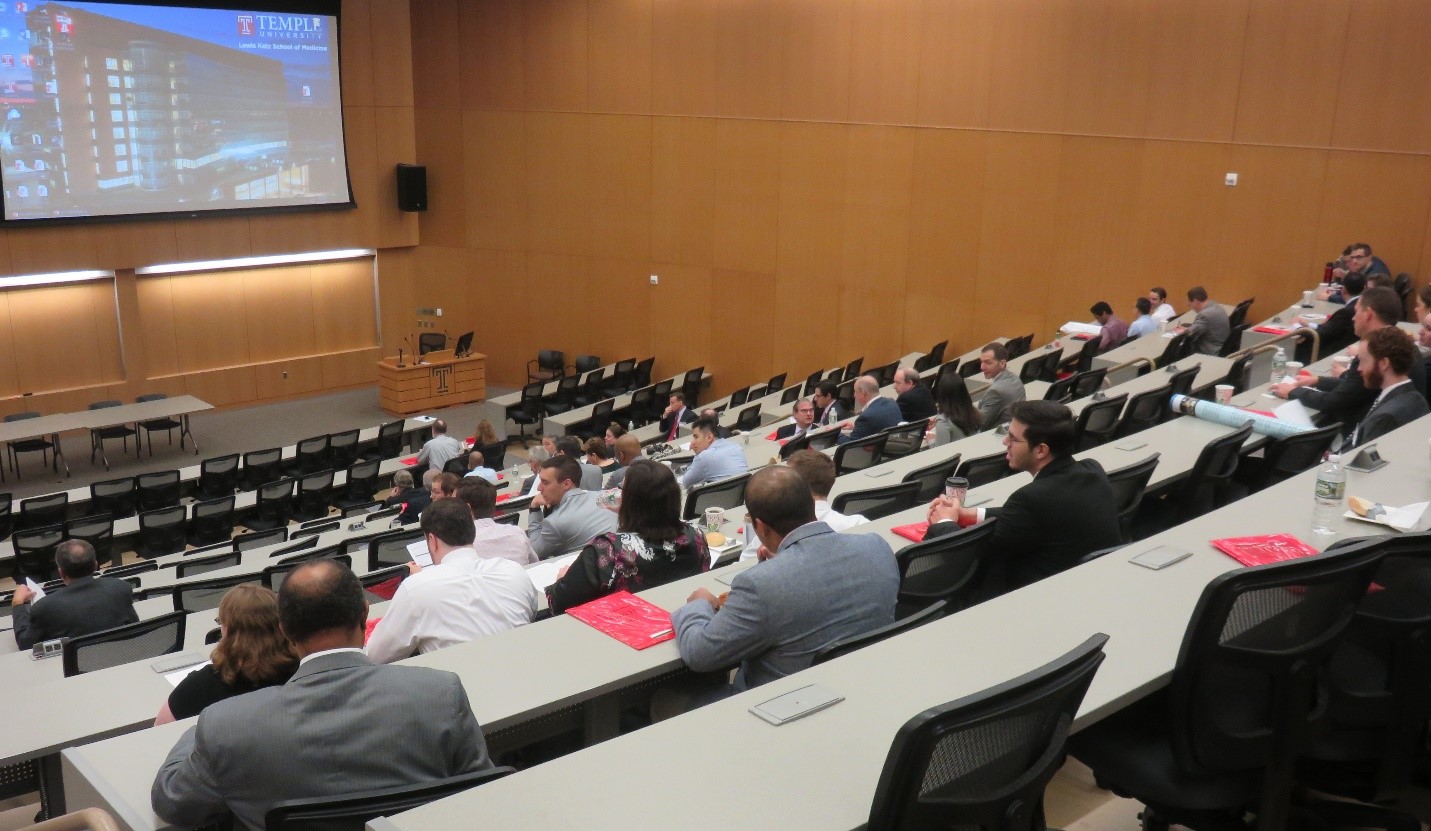
Resident Development Sessions
This is a unique educational series designed each year with substantial resident input and organized by the Chief Residents. The individual offerings change each year as the program develops and molds it core focus. Sessions occur the first Wednesday of every month from 7-8AM.
Morbidity and Mortality Series
The last Wednesday of every month from 7-8AM, Grand Rounds is typically reserved for review of cases which are believed to provide instructional benefit to all in an effort to improve patient safety and the quality of service we provide. Attendance at those lectures is typically restricted to residents, CRNAs and faculty of the Anesthesiology department.
Journal Club
Organized by the Chief Residents annually, peer-reviewed articles are presented by residents from different classes. The works are analyzed by residents and faculty with an eye to honing critique of basic or applied scholarly work.
Resident Educational and Clinical Series
The core educational day is divided into a morning session for the CA-2 and CA-3 classes, lasting four (4) hours and an afternoon session for the CA-1 residents lasting four (4) hours. Each education day varies in composition but includes some combination of lectures, problem-based learning discussions, oral board review, OCSEs, workshops and simulation.
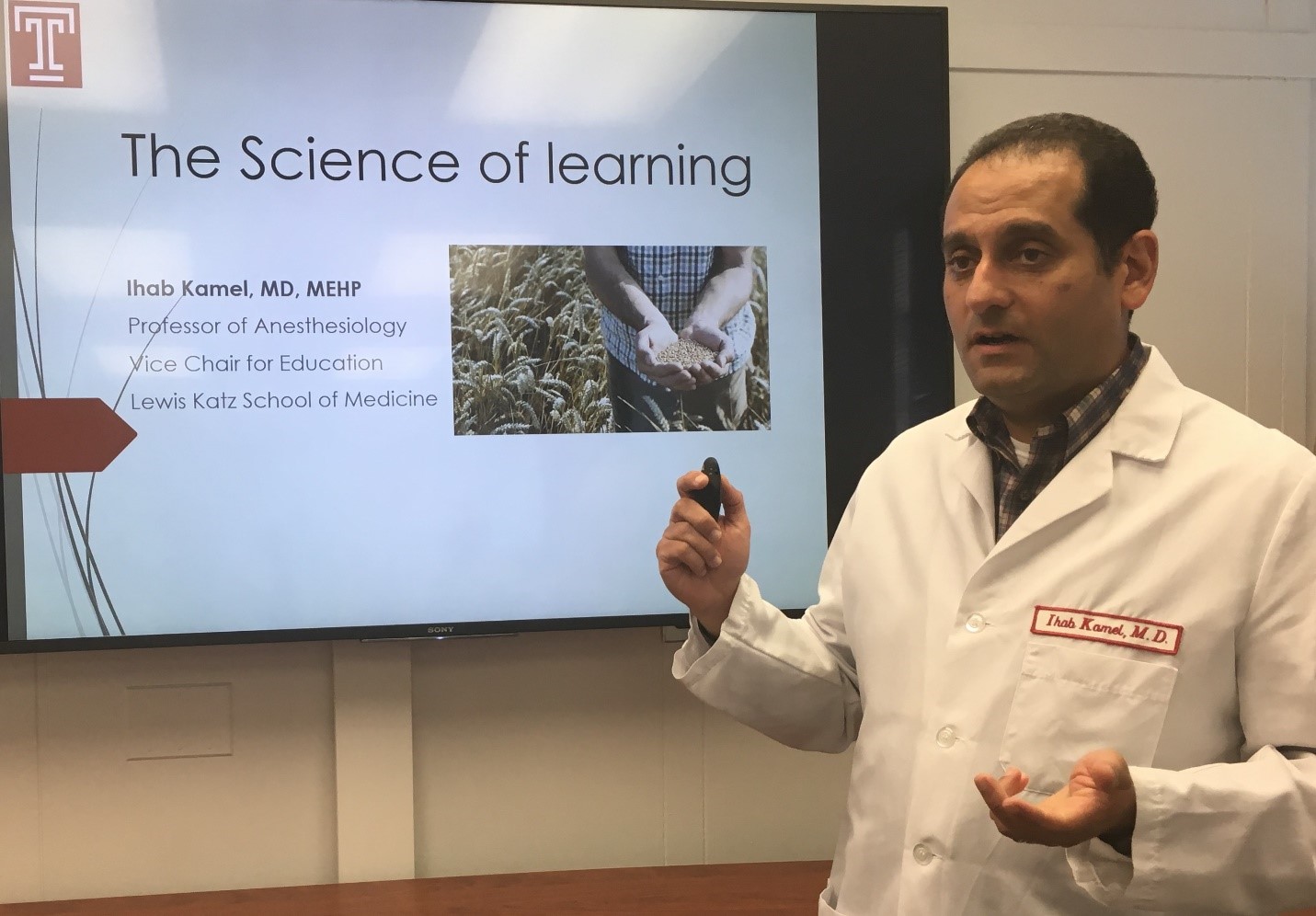
Lecture Series
The majority of the anesthesiology lecture series is presented at Temple University Hospital. For training and education in pediatric anesthesiology, residents rotate through St. Christopher’s Hospital and Children’s Hospital of Pennsylvania where they are required to participate in the educational programs held by those institutions.
CA – 1 “Introduction to Anesthesiology”
The CA-1 year begins in July and continues in August with an intense daily lecture series designed to introduce the new trainee to important elements within the field of Anesthesiology. This lecture series is bolstered by experience in both the operating room and the Simulation Center.
Beginning in September, the CA-1 class which is now typically integrated into operating room schedule, has a 4 hours of education provided weekly. The educational sessions are structured to focus the CA-1 resident in their independent study of the knowledge content required for the Basic examination as well as to prepare them for the clinical challenges integral to our field.
CA-2 & CA-3 “Advanced Concepts in Anesthesiology”
Starting in the CA-2 year, the resident is expected to begin acquiring a knowledge base demonstrating their more learned position within the program. Problem based learning discussions for the upper year classed focus on more advanced topics in Anesthesiology. The CA-2 and CA-3 resident is expected to demonstrate a greater participation within the lecture series as they embrace the ACGME goals of life-long commitment to learning. The lectures which begin in September and require more active resident participation.
CA-3 “Honing Advanced Training and Transitioning to Excellence”
The CA-3 resident who is beginning the transition to Anesthesiology Attending begins the year by providing one lecture to the new CA-1 resident as well as one Grand Rounds presentation under the mentorship of a faculty member.
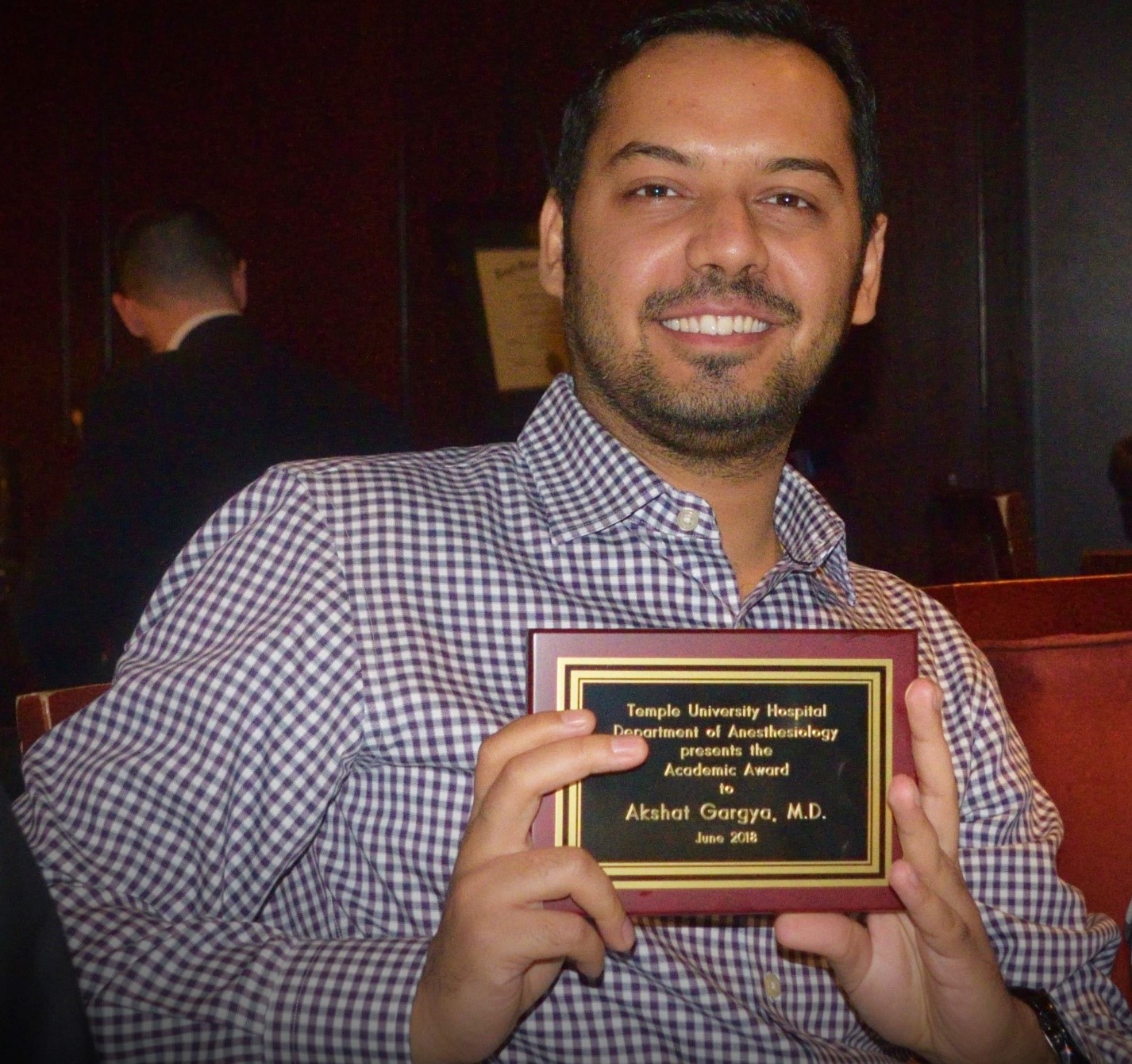 Creating the Attending Physician (CAP)
Creating the Attending Physician (CAP)
CAP is designed to extend well beyond the stated learning requirements of any medical board to the core of who tomorrow’s physician must be. In this curriculum, residents at all levels receive training in health care management, research, professionalism and education.
Simulation
Beginning the CA-1 year and continuing through the CA-3 year, residents are exposed to both common and rare events in Anesthesiology through a dynamic and constantly evolving Simulation program staffed by simulation trained Anesthesiology Attendings. Through simulation, residents gain confidence and awareness in the management of critical scenarios.
Workshops
Throughout the year, workshops are conducted to actively engage the resident learner in the anesthesiology concepts they have been studying independently as well as those presented in lectures. The workshops permit both faculty and resident to uncover and resolve gaps in training.

Oral Board Review
Starting in the spring, CA-3 residents will conduct a 20 minute oral examination with two selected faculty members. The oral examination will be conducted in the format of the ABA oral board examination. Following each oral examination, the resident will have a 10-15 minute feedback session to address deficiencies as well as strengths of each participant.
Rotations and Residency Overview
The Temple Anesthesiology residency program is designed in the classic manner in which residents complete an Intern (PGY-1) year before beginning their core anesthesiology training at Temple. Each resident’s educational experience at Temple University is different. The rotations are selected by the program with input from the resident to satisfy the requirements of the ABA and the ACGME for clinical training and are individually scripted to satisfy identified educational goals and needs.
Intern (PGY-1) year
Temple Anesthesiology has eight (8) medicine track categorical posts which allow residents to complete their intern year at Temple University Hospital. Categorical residents are expected to spend three (3) months during their intern year doing an elective in Anesthesiology with one (1) month reserved for scholarly projects.
The intern year may also be completed at an alternate program for applicants who match to an advanced or reserve position within the anesthesiology program. By the end of the intern year, and before starting their training at Temple, all residents are expected to have completed and passed the USMLE Step 3 examination.
 CA-1 (PGY-2) year
CA-1 (PGY-2) year
The starting anesthesiology trainee is immediately introduced to the operating room under the instruction of a seasoned anesthesiologist who assists the trainee in becoming acclimated to the new environment. As the resident gains expertise in the operating room they are introduced to other arenas where the anesthesiologist is vital. Typical clinical exposures in the CA-1 year are:
- General Anesthesia
- Remote Anesthesia
- Ambulatory Anesthesia
- Post Anesthesia Care Unit
- Intensive Care Unit
- Cardiac Anesthesia
- Thoracic Anesthesia
- Obstetric Anesthesia
- Pre-Admission Testing
- Vascular Anesthesia
- Neuroanesthesia
- Research
- Trauma Anesthesia
CA-2 (PGY-3) year
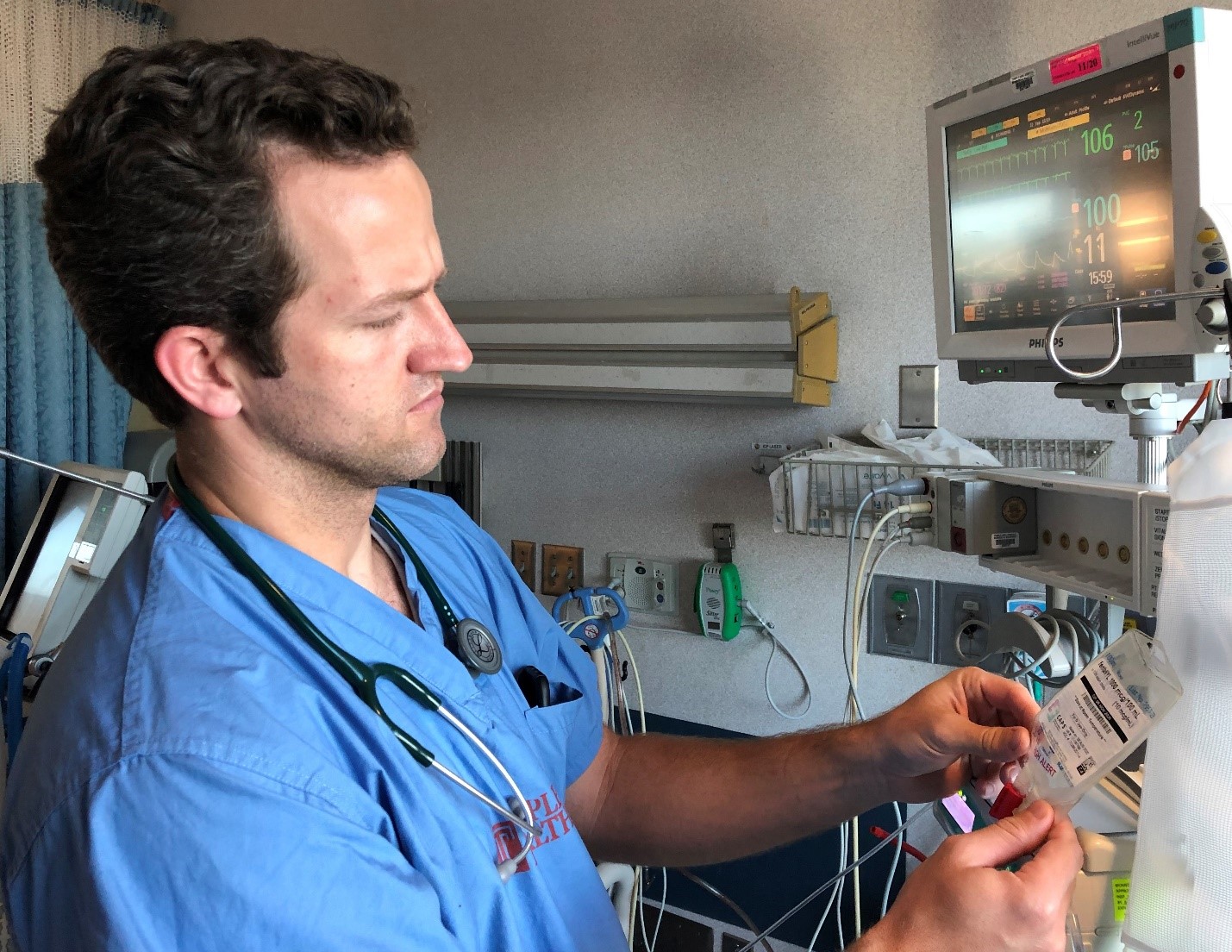
In the CA-2 year, the resident gains more responsibility both within the call team and in the duties assigned during the day. The residents continue to be closely supervised by their assigned attending and the CA-3 class as they assume a new and more challenging role within the program. Typical clinical exposures are:
- Pediatric Anesthesia
- General Anesthesia
- Remote Anesthesia
- Ambulatory Anesthesia
- Post Anesthesia Care Unit
- Intensive Care Unit
- Heart Transplantation
- Lung Transplantation
- Kidney Transplantation
- Liver Transplantation
- Neurosurgical ICU
- Obstetric Anesthesia
- Cardiothoracic Anesthesia
- Neuro Anesthesia
- Trauma Anesthesia
- Vascular Anesthesia
- Orthopedic Anesthesia
- Acute Pain
- Regional Anesthesia
- Chronic Pain
- Research
CA-3 (PGY-4) year
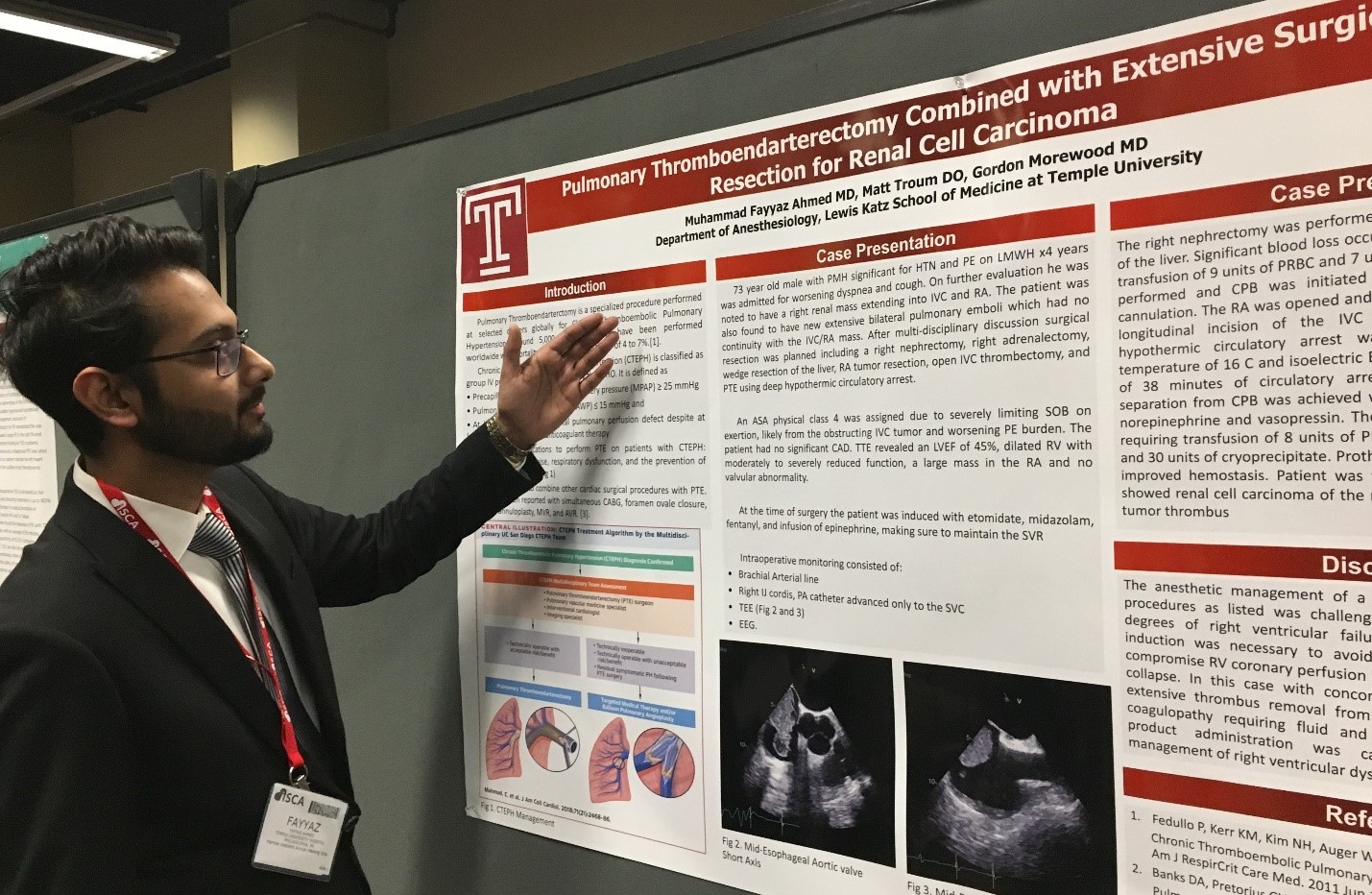
The CA-3 year is viewed as an important year in the transition to Attending Anesthesiologist. The senior resident is expected, before graduation, to demonstrate the ability to independently work as a competent practitioner. Under faculty direction, the senior resident assumes greater responsibility in management of the operating rooms and the call team.
- Pediatric Anesthesia
- General Anesthesia
- Remote Anesthesia
- Ambulatory Anesthesia
- Post Anesthesia Care Unit
- Cardiac ICU
- Cardiothoracic Anesthesia
- Heart Transplantation
- Lung Transplantation
- Kidney Transplantation
- Liver Transplantation
- Orthopedic Anesthesia
- Vascular Anesthesia
- Orthopedic Anesthesia
- Neuro Anesthesia
- Trauma Anesthesia
- Echocardiogram
- Acute Pain
- Regional Anesthesia
- Research
Electives
CA-3 year residents have an opportunity to hone their focus of training by electing to work in the previously mentioned areas of study as well as to create non-traditional backgrounds including:
- International Initiative
- Critical Care Medicine, including the Burn ICU
- Public Policy
- Echocardiogram
- Research
